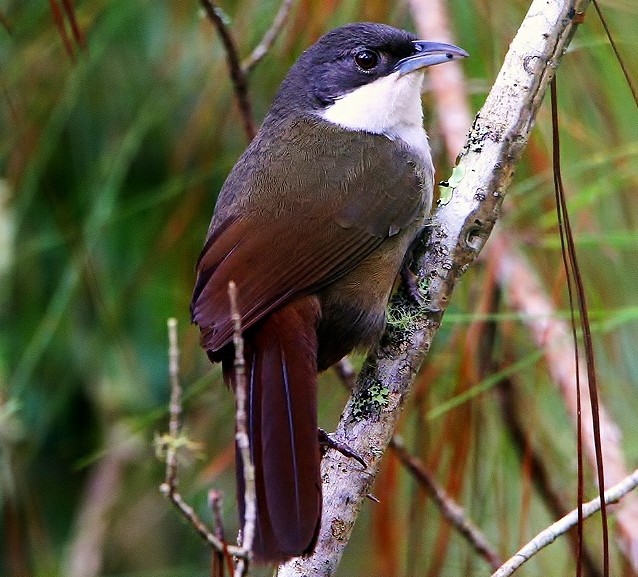 |
| Photo by José Pantaleón (Flickr) |
Common name:
chat tanager (en); saíra-de-Hispaniola (pt); tangara cornichon (fr); chirrí (es); schmätzertangare (de)
Taxonomy:
Order Passeriformes
Family Thraupidae
Range:
This species is endemic to the Caribbean island of Hispaniola, being found both in Haiti and the Dominican Republic.
Size:
These birds are 17-20 cm long and weighs around 50 g.
Habitat:
The chat tanager is mostly found in dense understory of moist forests and in scrublands, at altitudes of 750-2.200 m.
Diet:
They mainly feed on invertebrates such as spiders, worms, beetles and grubs.
Breeding:
Chat tanagers breed in May-July. The nest is an open cup made of moss, small herbaceous stems, leaf fragments, lichens, and other plant fibres, placed among dense vegetation, 1-5 m above the ground. The female lays 2 pale blue eggs with brown mottles, which she incubates alone. The chicks are fed by both parents but there is no information regarding the length of the incubation and fledging periods.
Conservation:
IUCN status – VU (Vulnerable)
This species has a small and fragmented breeding range and the global population is estimated at just 1.500-7.000 individuals. The population is suspected to be declining rapidly as a result of ongoing habitat loss through agricultural conversion and logging.







